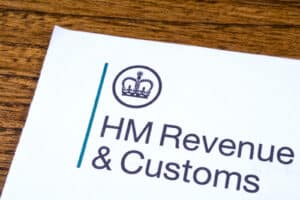Payment on Account For UK Self Assessment

Payments on account can be one of the most common stumbling blocks when it comes to your self-assessment tax return. Although it was introduced as an initiative to help taxpayers spread their tax payments, it can often result in annual frustration and can actually harm your cash flow if you are caught unaware.
Payment on account: What you need to know
The 31st January is the deadline everyone knows about, you must file your tax return and pay any taxes due. However, if you have a self-assessment tax bill of more than £1,000 a payment on account may also be required.
On 31st January each year you may need to make a payment to HMRC. This payment will settle any outstanding tax for the last tax year, plus an upfront payment for the next tax year.
You would also need to make a further payment on account on or before the 31st July per year.
Both payments are based on what you earned last year, instead of the current state of your finances. That’s because HMRC can’t predict how your income is going to fluctuate; it’s assumed that you’re bringing in the same, every tax year, even though that might not be the case.
So, how is the payment on account calculated?
Basically, any payment on account due is equal to 50% of the previous year’s tax bill.
Whether it is the first time your tax bill is over £1,000 in a tax year or it is your first year of trading you need to know what to expect the first time you make a payment on account.
As an example
If you began trading in 2020/21 and have a tax bill of £1,400 for that year the tax bill would need to be paid on 31st January 2022.
However, because your tax bill is over £1,000, you’d also have to make your first payment on account for the 2021/22 tax year. This is calculated as 50% of the amount due for 2020/21.
In this case that would be £700. This means that you’d owe £2,100 to HMRC on 31st January 2022.
20/21 tax bill = £1,400
21/22 upfront = £ 700 (1st payment on account)
Total = £2,100
A further £700 would be payable 31st July 2022 (2nd payment on account).
As a side note, Class 2 National Insurance contributions are not included in the calculation for payments on account, this is in fact deducted before multiplying your tax bill by 50%. But for simplicity, this hasn’t been taken into account in the calculation above.
Can I reduce the payment on account due?
Yes, this is possible. It’s important to remember that payments on account are based on your earnings from the previous year. This means that, should your income dramatically fall, your payments on account may be reduced to reflect a lower income. You can therefore make a claim to reduce your payments on account. Be careful though: reduce them too much and you can incur an interest charge on any tax shortfall.
What if I can’t afford it?
Under normal circumstances you should contact HMRC as soon as possible. Should you miss the deadline without informing them, you’ll start to accrue interest and late payment surcharges.
By contacting HMRC they may agree a time to pay arrangement, you will still be charged interest but you could avoid any surcharges.
How to pay
HMRC, in light of MTD for Income Tax, are encouraging more people to complete their self-assessment tax return digitally online. This can be done in most cases via the HMRC website or commercial digital software. Should you file your self-assessment online you will be able to make your payment on account at the same time should you chose. If you are submitting your return via a paper return you will receive a paper bill with a Bank Giro form for you to make your payment.
With all matters relating to tax if you are unsure you should speak to someone with tax knowledge or call the HMRC. It would pay to make regular checks ahead of the deadlines on interest rates and other changes to avoid any penalties.
Income, Expenses and tax submission all in one. GoSimpleTax will provide you with tips that could save you money on allowances and expenses you might have missed.
The software submits directly to HMRC and is the solution for the self-employed landlords, freelancers, sole traders and anyone with income outside of PAYE to file their self-assessment giving hints and tips on savings along the way.
GoSimpleTax does all the calculations for you saving you £££’s on accountancy fees.
Available on desktop or mobile application.